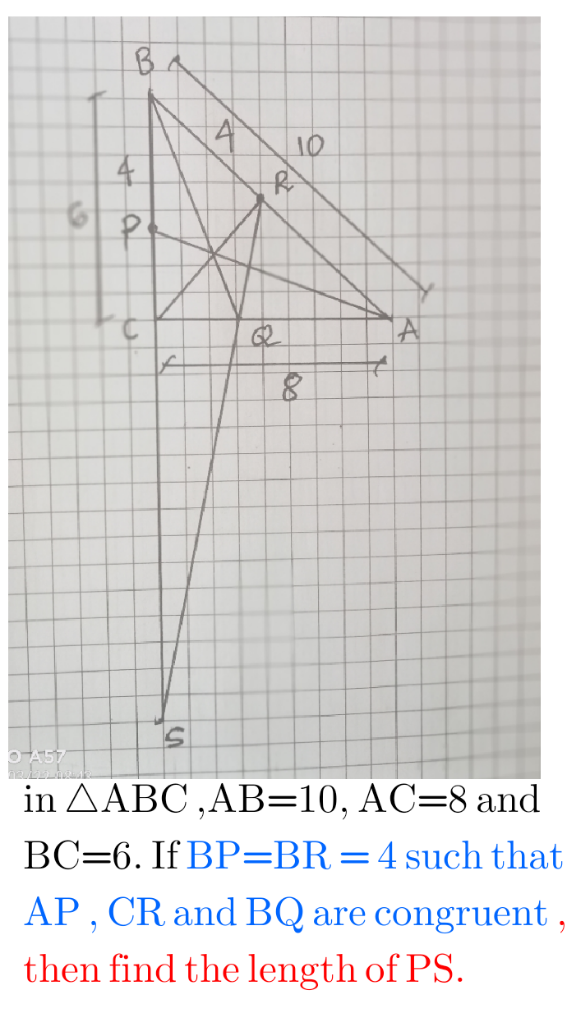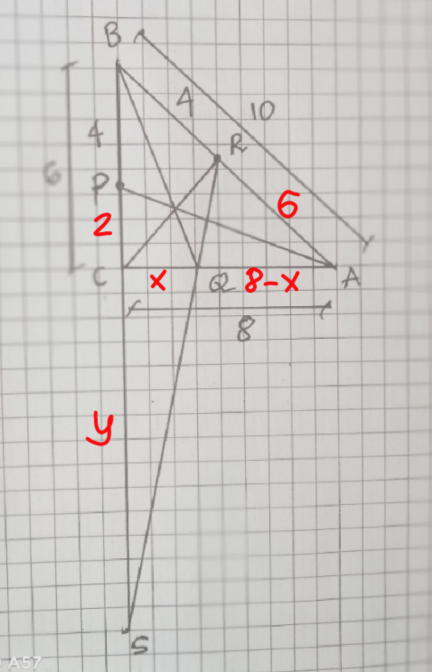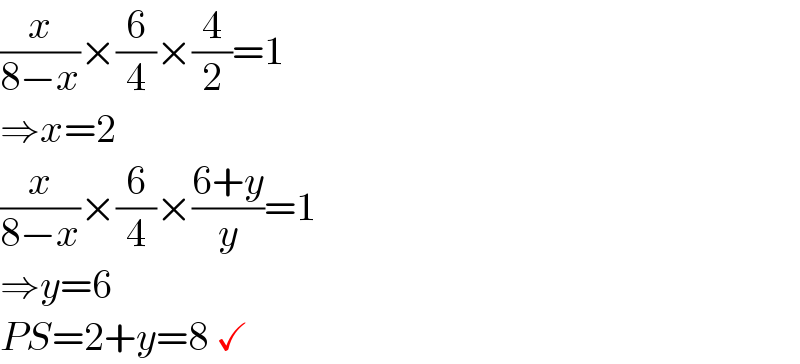
Question Number 205479 by cortano12 last updated on 22/Mar/24

Answered by mr W last updated on 22/Mar/24

Commented by mr W last updated on 22/Mar/24

$$\frac{{x}}{\mathrm{8}−{x}}×\frac{\mathrm{6}}{\mathrm{4}}×\frac{\mathrm{4}}{\mathrm{2}}=\mathrm{1} \\ $$$$\Rightarrow{x}=\mathrm{2} \\ $$$$\frac{{x}}{\mathrm{8}−{x}}×\frac{\mathrm{6}}{\mathrm{4}}×\frac{\mathrm{6}+{y}}{{y}}=\mathrm{1} \\ $$$$\Rightarrow{y}=\mathrm{6} \\ $$$${PS}=\mathrm{2}+{y}=\mathrm{8}\:\checkmark \\ $$
Commented by cortano12 last updated on 22/Mar/24

$$\:\underbrace{ } \\ $$
Commented by mr W last updated on 22/Mar/24

$${Ceva}'{s}\:{theorem}\:\& \\ $$$${Menelaus}'\:{theorem} \\ $$
